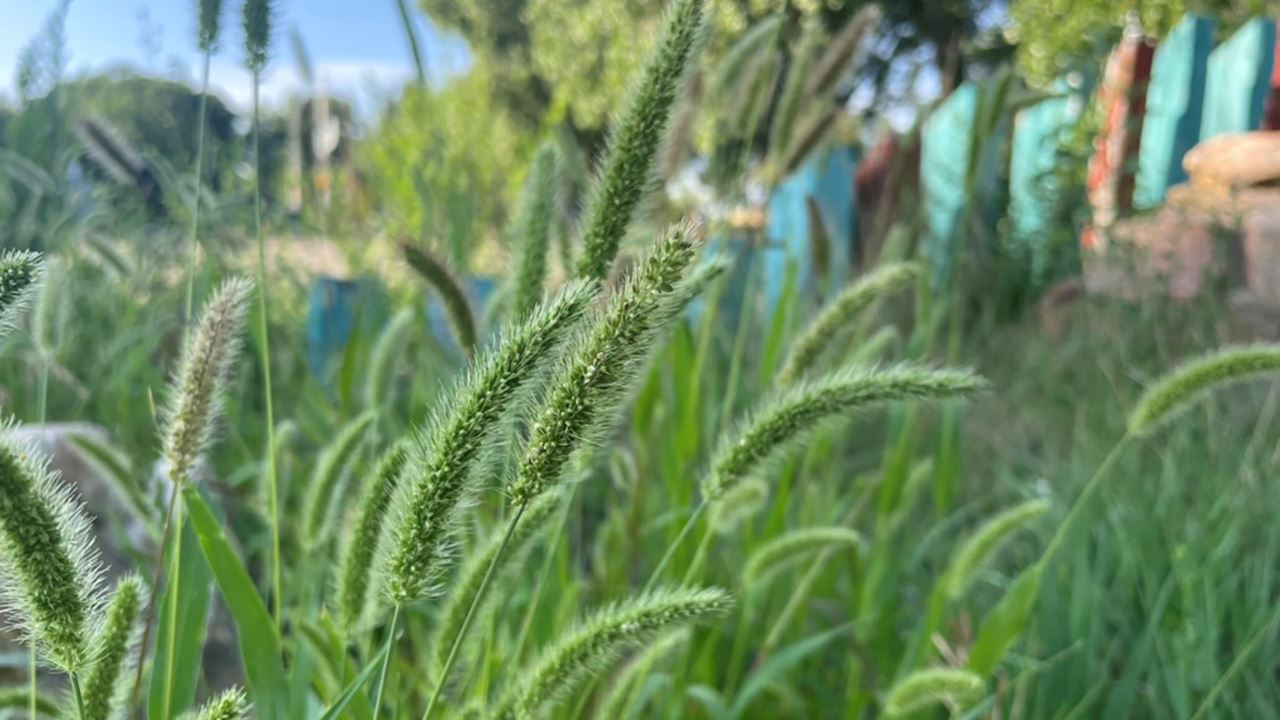|
New Mexico State University researcher leads national study on invasive plant species
Las Cruces, New Mexico, USA
September 20, 2024

Setaria viridis, or green bristlegrass, is a non-native annual grass that thrives in disturbed areas across much of the United States, including the riparian corridor in Las Vegas, New Mexico. A New Mexico State University researcher recently published a study that examined the impacts of invasive plant species. (Photo courtesy Magda Garbowski)
A New Mexico State University researcher led a team of scientists from around the world in a study aimed at understanding the impacts of invasive plant species.
The results of the study were recently published in the journal Proceedings of the National Academy of Sciences.
Magda Garbowski, an assistant professor of restoration ecology in NMSU’s College of Agricultural, Consumer and Environmental Sciences, completed the study as part of a USGS John Wesley Powell Center for Analysis and Synthesis working group. The group sought to clarify the missing link between plant invasions and associated changes in ecosystem functions by assessing how invasive species alter the functional traits of plant communities.
“Plant functional traits drive how nutrients, water and carbon are cycled and stored within ecosystems,” Garbowski said. “Therefore, the impacts plant invasions have on ecosystem functions are likely driven by differences in traits of native and invasive species. However, until now, we did not know if the proliferation of invasive species resulted in predictable and consistent changes in the functional traits of plant communities.”
Using data from more than 75,000 vegetation monitoring plots from across the United States, the research group found that plant communities with higher abundances of invasive species are characterized by leaf and root traits that support fast resource acquisition and short-leaf and root lifespans.
The findings also show that plant communities with higher abundances of invasive species are shorter and more shallowly rooted. These communities are also characterized by plants with thin and fine roots suggesting that plant assemblages dominated by invasive plants are less reliant on fungal symbionts for belowground resources acquisition.
“We found these patterns to be remarkably similar across desert, grassland and forest ecosystems, suggesting that the establishment and spread of naturalized species leads to predictable and consistent changes in community-level traits,” Garbowski said.
The functional shifts identified by the research team likely underpin many of the impacts invasive species have on ecosystem functions, including changes in carbon storage, litter decomposition, and nutrient and water cycling.
“This functional understanding of how non-native species are altering plant communities is essential for anticipating impacts of invasive species on ecosystem functions and associated ecosystem services,” Garbowski said.
Garbowski said the impacts and associated costs of invasive species will continue to increase in the coming decades. This study will help inform decisions that ecologists, land managers, and policymakers need to make when managing non-native species.
“Specifically, a better understanding of the functional consequences of invasions will clarify when interventions are most important to mitigating the impacts of invasive species on ecosystem functions and associated ecosystem services,” Garbowski said.
To read the study, visit www.pnas.org/doi/10.1073/pnas.2403120121.
More news from: New Mexico State University
Website: http://www.nmsu.edu Published: September 20, 2024 |
|
The news item on this page is copyright by the organization where it originated
Fair use notice |